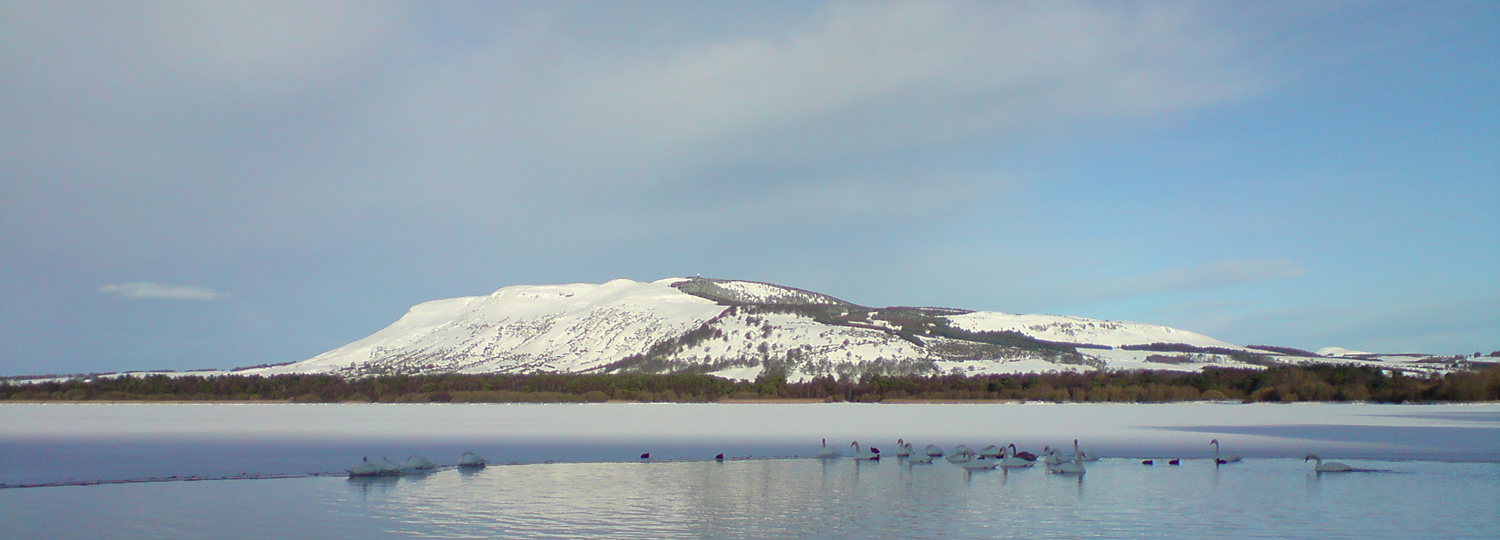Overview
Loch Leven is the largest shallow eutrophic lake in lowland Scotland (surface area 13.7km2, mean depth 3.9m). It is an excellent example of a lake that supplies a wide range of ecosystem services and has a long documented history of multiple anthropogenic pressures and associated ecological and management responses.
Pressures
Flow regulation and land reclamation: In the early 1800s, growing downstream industries increased demand for a more stable water supply from the loch. Landowners also wanted to increase agricultural productivity by reclaiming land around the shores of the loch. Fishery management: Loch Leven is managed as a world famous trout fishery. Eutrophication: Industrial development, agricultural intensification and population growth caused phosphorus (P) inputs to Loch Leven to increase from c. 5t y-1 in the early 1900s to 20t y-1 by 1985. This caused algal blooms and reductions in water clarity that decreased the growing depths of aquatic plants (macrophytes) and reduced biodiversity.
Management responses
Flow regulation and land reclamation: Flow regulation began in 1850 when sluice gates were installed on the outflow. This lowered the loch level by circa 1.5m and exposed 265ha of land. The sluice gates still control the outflow. Fishery management: Loch Leven was stocked with brown trout from the 1880s to the 1930s and then from 1983 onwards (max. ~166,000 fish y-1). The aim was to boost the economic value of the fishery. Stocking with rainbow trout began in 1993 (max. ~30,000 fish y-1). All stocking ceased in 2004. Eutrophication: Phosphorus inputs to Loch Leven were reduced significantly between 1985 (c. 20t y-1) and 1995 (c. 8t y-1) by reducing discharges from local industry and waste water treatment works.
Monitoring the environment
CEH has monitored Loch Leven regularly since 1968. The results of this work have provided a research platform for many shorter term collaborative research projects, such as palaeolimnological assessments, investigations of climate change impacts and studies of macronutrient cycling. When additional sources of data are included, the Loch Leven data set spans more than 150 years and a wide range of variables including hydrology, chemistry, physics, macrophytes, algae, zooplankton, macroinvertebrates, macrophytes, fish and wildfowl.
Environmental responses
Flow regulation and land reclamation: Downstream flooding increased in the short term and loss of littoral zone habitat resulted in a number of ecological impacts. These included the loss of sensitive macrophytes, local extinction of arctic charr and reduced numbers of wading waterbirds. Fishery performance: Fish stocking did not increase the value of the fishery in the long term. Introducing rainbow trout reduced zooplankton grazing of phytoplankton and increased algal abundance through a trophic cascade effect. Eutrophication: When the external P loading to the loch was reduced, open water P concentrations fell, water clarity increased (especially in spring) and submerged macrophytes re-colonised deeper areas of the loch. Ecological recovery was delayed by internal P cycling for about 15 years.
Contact
Dr Linda May
